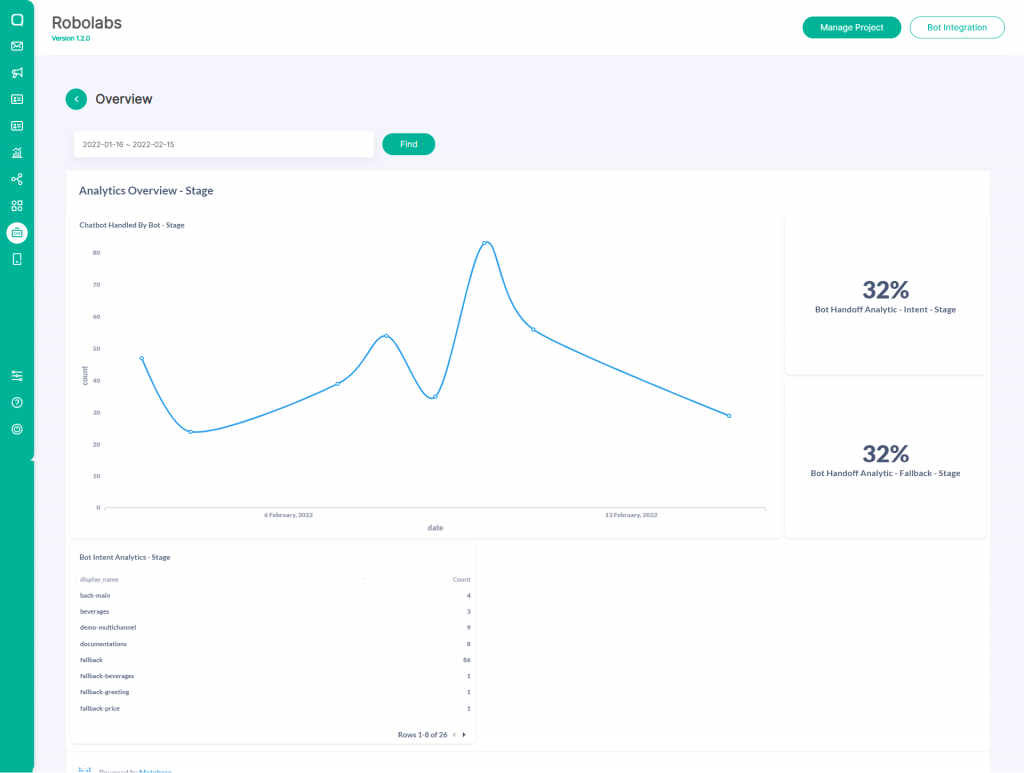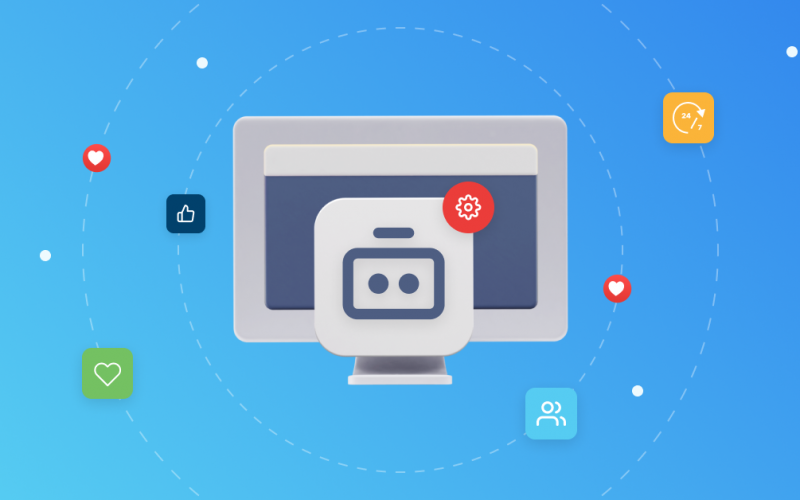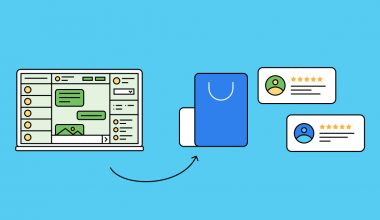Qiscus Robolabs is an add-on platform where businesses can use the Qiscus Omnichannel Chat dashboard by relying on automation technology to respond to all incoming messages automatically. Qiscus Robolabs is a simplified version of a chatbot, which can be used right away without requiring any coding.
Overview of Qiscus Robolabs
Qiscus Robolabs was first launched at the end of 2021 and serves as an integrator between the bot engine and the Qiscus omnichannel dashboard. Qiscus Robolabs makes it easy for businesses to create their own bots without having to go through a tedious coding process. In addition, any amendments on Qiscus Robolabs is automatically integrated with the Qiscus omnichannel dashboard, so there is no need for additional effort to work on separate platforms.
Currently, Qiscus Robolabs is integrated with Dialogflow, Google’s NLP platform. Moving forward, Qiscus Robolabs will continue to make improvements for ability to integrate with other bot engines. Almost a year since it was first released, Qiscus Robolabs already boasts a variety of features that can be used for multiple needs for businesses. There are at least 16 main features that will be explained in greater detail below.
The extremely simple implementation of Qiscus Robolabs should be one of the reasons why businesses should start adopting this bot solution from Qiscus. Robolabs function as a bot in Qiscus’s Omnichannel allows businesses to respond to all incoming messages automatically without exception. This greatly eases business activities, especially in responding to the large number of incoming messages. In future, Qiscus Robolabs will continue to be upgraded to provide leading chatbot services for business owners.
17 Key Features of Qiscus Robolabs
1. Add Project Feature from Google Dialogflow
To be able to use Robolabs, it is important for businesses to integrate it with Google’s bot engine, Dialogflow. Unfortunately for some businesses, this integration process is quite complex and time-consuming. This is because the business must first complete the process of creating a bot project in Dialogflow.
To overcome this, Robolabs allows the Add Project feature from Google Dialogflow feature for businesses to integrate bot projects from Dialogflow by relying on Google OAuth. This way, businesses do not need to go through a complex integration process. The tutorial on using this feature can be seen on this link.
2. Add Project Feature from Custom Bot Engine
This feature allows businesses to integrate a wide variety of bot engines into Robolabs. This certainly makes it easier for businesses to integrate their own bots through a simple process. However, do note that if you use your own bot, everything related to the bot’s response will be directly handled by the bot engine you are using. As for the Channel Routing feature, it will still be done by Robolabs. For a tutorial on using this feature, please check the following page.
3. Bot Template Features
The Bot Template feature is one of the main features available in Qiscus Robolabs. The use of this feature allows businesses to be able to create their own chatbots without having to go through any coding process at all. Through this feature, businesses simply need to choose which template suits their needs and then make further adjustments using only Excel. Making chatbots now is as easy as digital editing.
Please visit the following page for more information.
4. Channel Routing Features
You can create and customize various bots for different communication channels with the Channel Routing feature. With this feature, businesses can more freely create different bots for different channels so that they can be tailored to the needs of each channel. For a full tutorial, click on the following link.
5. Export and Import Project Features
Using this feature, you can export or import bot projects that have been created previously. If you want to make changes to the bot project and want to export it into the form of an Excel file, you can simply use the Export feature on the Bot Information page. You can also duplicate or replace the bot in another project. Some of the components that can be exported with this feature are Bot Flow, which includes all intents, responses (text), and training phrases, Auto Resolve Room, and Webhook Dialogflow (if using). For more details, please read the following tutorial.
6. Handover Agent Feature (Outside Office Hours)
The Handover Agent feature allows bots to automatically redirect messages from customers to available agents. This feature will be triggered by a predefined intent. For example, for a conversation categorized as simple, it will be managed by a bot. However, if the bot detects the conversation is heading towards a more complex direction, then the bot will redirect it to an available agent. Once the agent has joined the conversation, the bot will automatically be deactivated.
However, there are times when messages are sent outside office hours where no agents are available. To overcome this, businesses can make adjustments to the Handover Agent sub-feature called Outside Office Hours. This feature allows the business to reply to customers who contact the business outside office hours. To activate this feature, check out our tutorial on the following link.
7. Handover Agent Feature (Handover to Agent Who is Online)
This feature allows conversations to be forwarded only to agents who are currently online and thus available. Therefore, if there is an intent that triggers the bot to forward the conversation to the agent, but no agent is online in the division, then the conversation will not be forwarded to the agent and will still be served by the bot. This feature also allows businesses to manage information conveyed to customers if there is no online agent who is able to respond to customers.
8. Training Bot Features (Live Training)
Although chatbots are often referred to as smart robots, of course it is not impossible if there are times when chatbots are not always able to respond accurately. To overcome this, businesses can take advantage of the Training Bot (Live Training) feature in Qiscus Robolabs.
With this feature, the bot system will immediately be able to perform training using incoming queries from customers and then train the bot to become familiar with the intent desired by the business. In addition, this feature also allows businesses to review chatbot conversations up to 7 days before to identify which phrases or intents the chatbot needs retraining for. For more details about this feature, please visit the following page.
9. Training Bot Features (Batch Training)
Similar to the previous feature, this feature also functions to train bots so that they can always respond to customer messages appropriately. The difference with the Batch Training feature is that business owners can conduct multiple trainings at once using the Excel file upload mechanism. Through this feature, businesses can upload up to 20 intents with a maximum of 200 phrases in each intent. For more details, check out the tutorial at the following link.
10. Auto Resolve Room Feature
Just like agents, bots can end the conversation if it perceives that there are no longer any response from the customer. To do this, businesses can activate the Auto Resolve Room feature found in the Qiscus Robolabs settings.
There are two stages in using this feature. In both stages, the business can determine the desired time limit for the bot to take an appropriate action.
- First stage: The bot will automatically send a message in the form of follow-up messages if the customer does not reply to the last bot message during the predetermined time.
- Second stage: The bot will automatically end the conversation if the customer still hasn’t replied or responded to its follow-up messages within the specified time.
11. Manage Intent Features
In addition to using bot templates, businesses can also create and manage bot flows with the Manage Intent feature. This feature is directly connected to the Dialogflow Console, so any intent changes made to Robolabs will automatically appear in the Dialogflow Console. For a complete tutorial on how to use this feature, please visit the following page.
12. Auto Tagging on Intent
Auto Tagging on Intent functions by tagging an intent automatically when the bot detects one that matches the previously created tag. The tag will be displayed in the related conversation or chatroom.
13. WhatsApp Interactive Message Features
WhatsApp’s Interactive Message feature allows bots to display responses in a responsive form in WhatsApp chat rooms. The form consists of several sections, such as List Header, Section Titles, Row Title, Row Description, and Single Send Button. Currently, there are 2 types of Interactive Messages contained in Qiscus Robolabs: the WhatsApp Interactive List Message and the WhatsApp Interactive Button Message.
An important step in activating this feature is that you must first assign a WhatsApp channel to the bot project you want to use. If this is not done, you will not be able to activate the Interactive Messages WhatsApp feature on Qiscus Robolabs. Refer to the image below, which is an example of the implementation of the Interactive Messages WhatsApp feature:

14. Get Customer Name Feature
Businesses can set up bots to include the name of the sender in their response to messages from customers using the Get Customer Name feature. The steps are quite simple; simply include the code {$.name} in the response template of each bot respectively.
15. Dialogflow Webhook Features
By default, the chatbot in Qiscus Robolabs will respond according to the specified intent using a static response. If the business activates the Dialogflow webhook, businesses can implement a more dynamic response according to their individual needs.
As an illustration, when a business activates the Dialogflow Webhook feature, Dialogflow will automatically respond to the existing intent according to the specified service. Subsequently, each intent will contain a setting to activate the webhook. For more details regarding the use of this feature, please visit the following page.
16. Custom API Feature
The Custom API feature allows businesses to integrate with external systems without the need for an intermediary system. Furthermore, this feature also allows businesses to send and parse responses more dynamically, eliminating the need for changes to these external systems. Visit the following page for more information.
17. Bot Analytics Features
As the name implies, the Bot Analytics feature allows businesses to view and gain various insights of using tools from Qiscus Robolabs. Available metrics from this feature that may be useful for businesses to use include number of conversations managed by bots, the number of conversations passed over from bots to agents, and the number of conversations detected as having an intent.
Insights from all the available metrics will be presented in graphical form as you can see in the image below:

Many features presented in Qiscus Robolabs are complete and useful, and are certainly the right reason why your business needs a chatbot. If you are interested in using Qiscus Robolabs, please contact us via the following link. Meanwhile, if you are a Qiscus Robolabs user and encounter difficulties in the process of using it, you can contact us here for further assistance.



